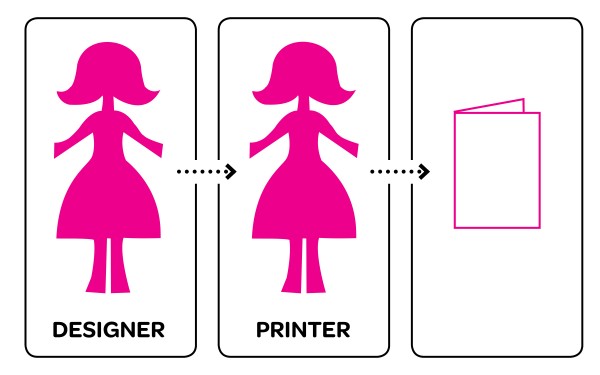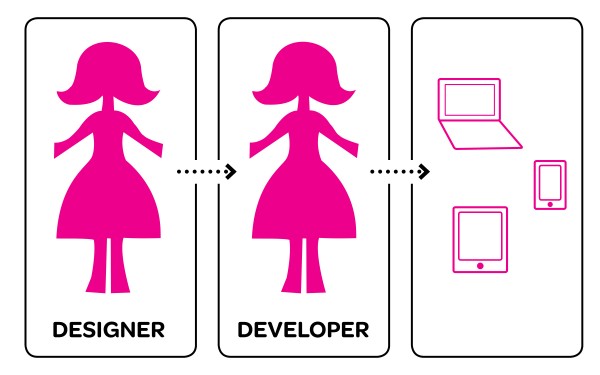Interaction designers are not web developers and should not be expected to take on the role of development. Developers are experts in what they do, which allows us to be experts in what we do: creating the conditions for meaningful user experiences.
While the proposition of a clear division of roles may be controversial with some, it is becoming increasingly unrealistic for designers to execute all aspects of a project. There is just too much complexity. Interaction design projects can encompass content management systems, multiple platforms and user contributed content, among other factors. Developers know how to build support systems and execute a designer’s vision, much like an offset printer brings life to a printed artifact. In order for the relationship between designer and developer to function and flourish, we must know how to communicate our vision and be experts in designing online experiences.
Expert Coder ≠ Interactive Designer
You do not need to be an expert coder to be a great interactive designer. This is particularly important to understand if you desire a transition from designing primarily for print, to designing for screen based experiences. Focus on understanding how to create meaningful non-linear user experiences. This understanding hinges on audience research, applying typography and form appropriate for the screen, considering multiple platforms (i.e. mobile, tablet, desktop hub) and creating refined clear hi-content wireframes.
Know The Conventions & Then Push
While we don’t need to know extensive coding language, we do need to have a basic understanding of the means of production. When we design for print, we know what industry conventions and standards to follow. When designing for the screen it’s equally important to be aware of industry conventions. Designers often push printers and developers beyond what they think is realistic or possible. This may result in a challenging production planning phase, but the testing of such boundaries is a critical part of innovation. When designing screen based experiences, push up against one or two conventions at a time, and observe key industry standards to preserve credibility with your developers and clarity with your user.
Convey Your Concept
In addition to creating comprehensive static wireframes, animated prototypes allow designers to convey interactive concepts to clients and developers. iWork’s Keynote is a robust and easy to use software tool for demonstrating the role motion and interaction play in interaction design. Simulating motion (whether roll over states or transitions) may help identify moments you’ve overlooked, but that are critical to the user experience. Animated prototypes can provide the foundation for a richer conversation between designer and developer.


While we don’t need to know extensive coding language, we do need to have a basic understanding of the means of production. When we design for print, we know what industry conventions and standards to follow. When designing for the screen it’s equally important to be aware of industry conventions.
Quick Tips
1. Don’t be intimidated by the software or coding languages. Focus on creating meaningful user experiences and leave the building to the developers.
2. Learn the industry vocabulary in order to communicate concepts.
3. Be aware of industry conventions in order to plan a successful project.
Dig Deeper!
1.Read Jesse James Garrett’s Elements of User Experience.
2. For more on communicating interaction design concepts read this Parse post: “Strengthen Your Design Process With Narratives.”